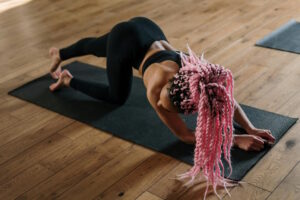
Pilates is a versatile exercise method that can be tailored to help you reach specific fitness goals effectively. Whether you’re looking to improve core strength, enhance flexibility, relieve stress, or address other fitness objectives, Pilates can be a valuable tool in your fitness toolbox. In this guide, we will explore the concept of Pilates workouts for specific goals and provide insights on setting and achieving these objectives.
How do you set Pilates goals?
Setting Pilates goals, like any fitness goals, requires a clear and structured approach. Here are steps to help you set your Pilates goals effectively:
· Define Your Objectives: Start by identifying what you want to achieve with Pilates. Do you aim to improve flexibility, build strength, or alleviate back pain? Be specific about your goals.
· Consider Your Current Fitness Level: Assess your current physical condition and Pilates experience. Your goals should be realistic and attainable based on your starting point.
· Set S.M.A.R.T. Goals: Make your goals Specific, Measurable, Achievable, Relevant, and Time-bound (S.M.A.R.T.). For example, “I want to improve my core strength by increasing my plank hold time to two minutes within three months.”
· Create a Plan: Develop a structured plan that outlines the exercises, frequency, and duration of your Pilates workouts. A well-structured plan is crucial for progress.
· Monitor Your Progress: Regularly track your progress by recording key metrics and observing how you feel during and after Pilates sessions.
· Adjust as Needed: Be flexible in adapting your goals and plan if necessary. Sometimes, your priorities or circumstances may change.
What are goals for Pilates?
Pilates offers a wide range of fitness goals that cater to different needs and preferences. Here are some common goals you can pursue with Pilates:
· Core Strength: Strengthening the core muscles, including the abdominal and lower back muscles, is a fundamental goal in Pilates.
· Flexibility: Pilates exercises improve flexibility by targeting various muscle groups and promoting a full range of motion.
· Posture Improvement: Pilates emphasizes good posture, making it an excellent choice for individuals seeking to correct postural issues or maintain proper alignment.
· Stress Reduction: The focus on controlled movements and breathing in Pilates can help reduce stress and promote relaxation.
· Injury Prevention and Rehabilitation: Pilates is often used for injury prevention and rehabilitation purposes, aiding in recovery and preventing future injuries.
· Improved Balance and Coordination: Pilates exercises challenge balance and coordination, making it suitable for those looking to enhance these skills.
How do you set a specific fitness goal?
Setting a specific fitness goal is crucial for success, regardless of the exercise method you choose. To set a specific fitness goal, follow these guidelines:
· Be Clear: Define your goal clearly. State exactly what you want to achieve, whether it’s running a certain distance, lifting a specific weight, or mastering a particular Pilates exercise.
· Make It Measurable: Determine how you will measure your progress and success. This might involve tracking time, repetitions, distance, or other relevant metrics.
· Ensure It’s Achievable: Set a goal that is realistically attainable based on your current fitness level and circumstances. Unrealistic goals can lead to frustration.
· Relevance Matters: Ensure that your goal is relevant to your overall fitness objectives and personal interests.
· Set a Deadline: Establish a timeframe for achieving your goal. A deadline creates a sense of urgency and motivation.
Can Pilates be your only exercise?
Pilates can be your primary form of exercise if it aligns with your fitness goals and preferences. It offers a holistic approach to fitness, incorporating strength, flexibility, balance, and mind-body connection. However, whether Pilates can be your sole exercise depends on your specific fitness objectives. Pilates is excellent for improving core strength, flexibility, and posture, but if your goals include cardiovascular fitness, muscular hypertrophy, or specific sports-related skills, you may want to complement your Pilates practice with other forms of exercise.
In summary, achieving fitness goals with Pilates requires a structured approach that includes defining your objectives, creating a plan, and monitoring your progress. Pilates offers a wide range of goals, including core strength, flexibility, stress reduction, and more. When setting fitness goals, specificity, measurability, achievability, relevance, and time-bound targets are key. Whether Pilates can be your sole exercise depends on your individual goals and needs, and it can be complemented with other forms of exercise to achieve a well-rounded fitness routine.